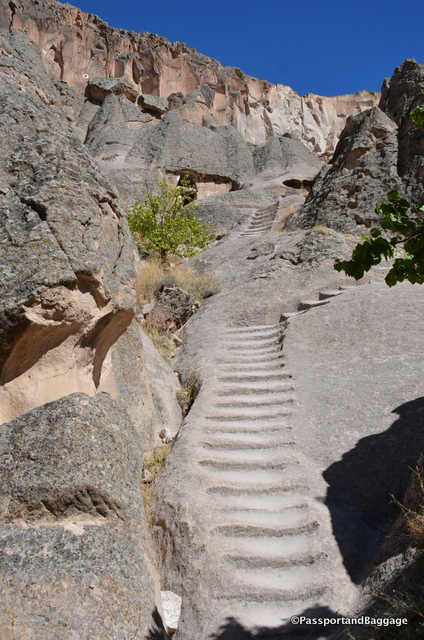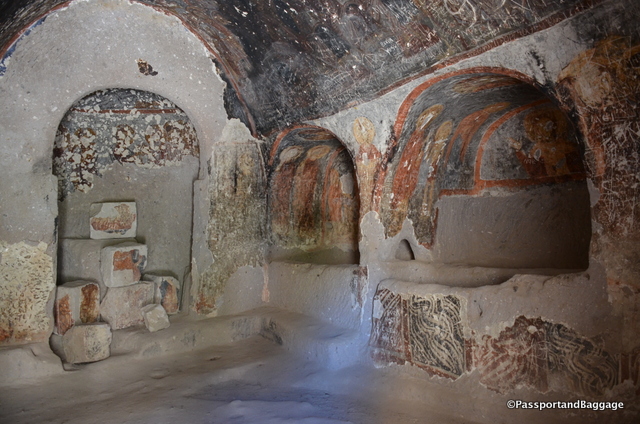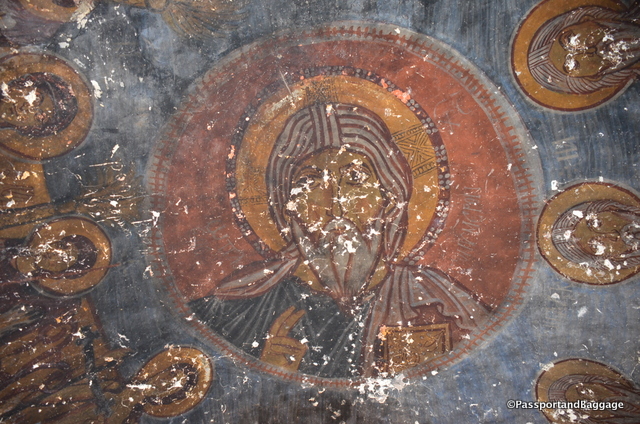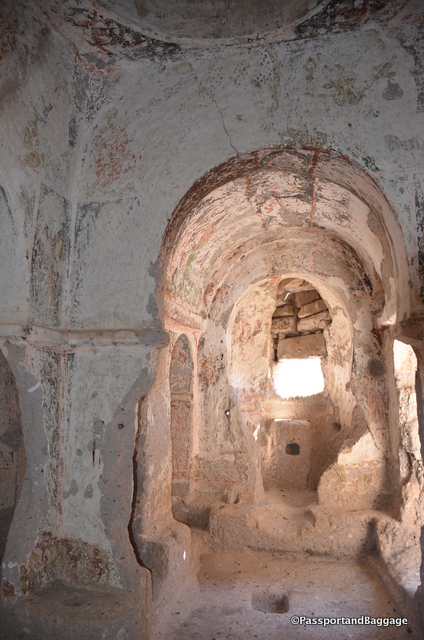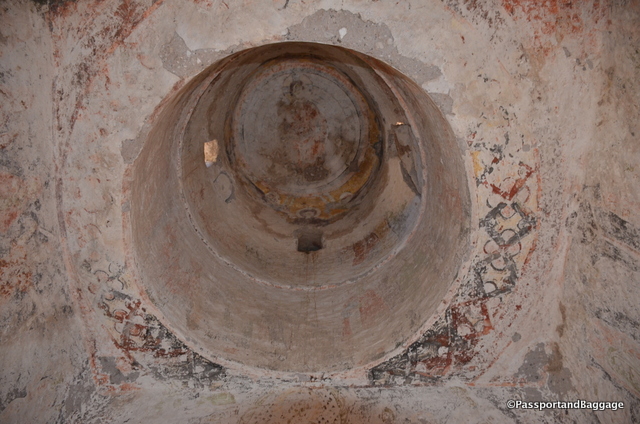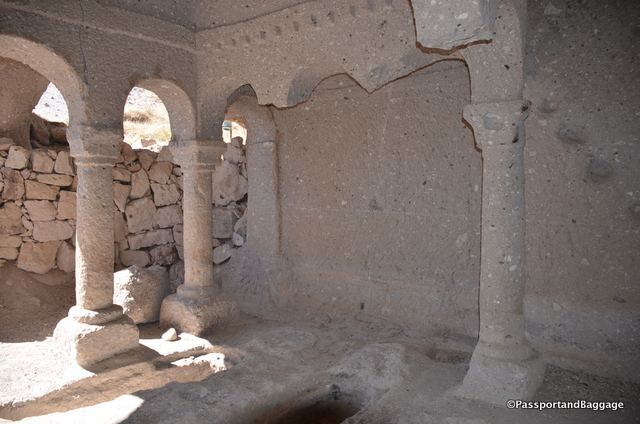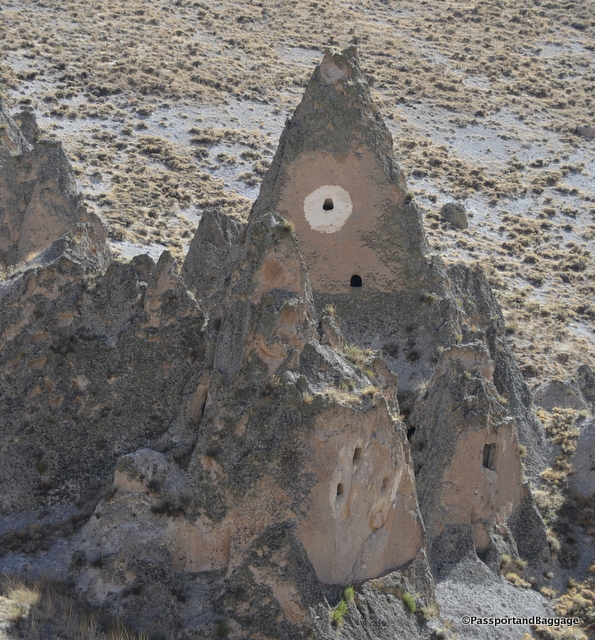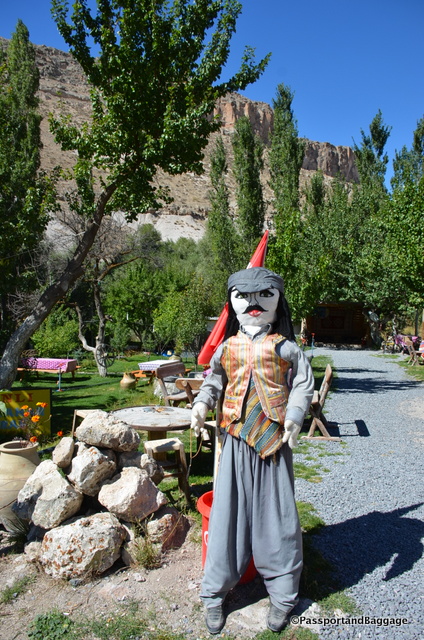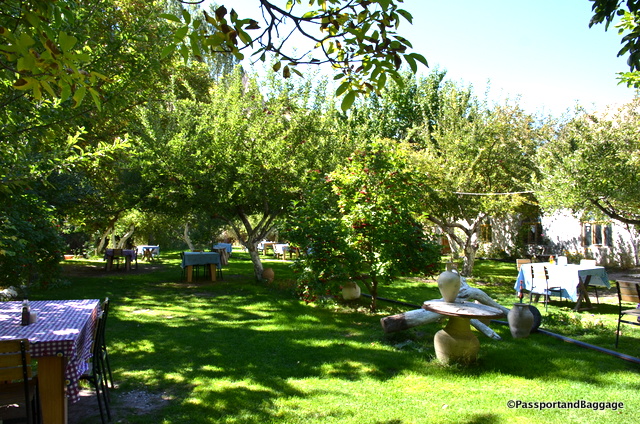September 30, 2016
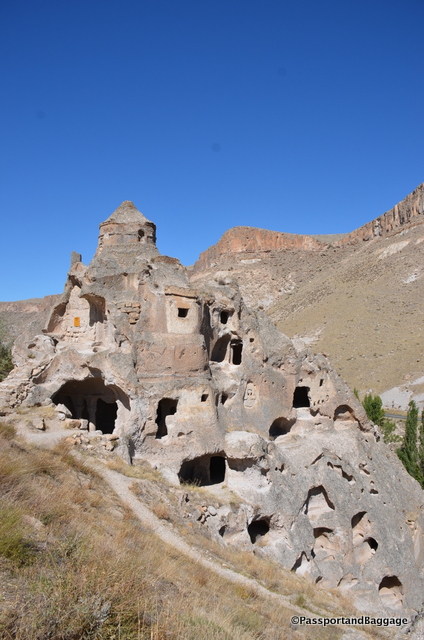 Our day began in the Soğanlı Valley, (The Valley of Onions). This is about off the beaten path as you can get, not only due to the drive, but the remoteness of the valley itself.
Our day began in the Soğanlı Valley, (The Valley of Onions). This is about off the beaten path as you can get, not only due to the drive, but the remoteness of the valley itself.
Around the sixth century the Christian inhabitants of this region created a vast network of tunnels into the soft volcanic rock. These tunnels extend as deep as 275 feet on eight different levels, in which several thousands of people lived.
The purpose of visiting the valley is to see this cave city, which is said to be older than Cappadocia with its churches and frescoes. We have spent much time speculating why there are so many churches in these valley’s and have been unable to come up with a theory.
Your first stop is the Tokalı kilise (Buckle church). It is up a steep, slippery, much-eroded stairway cut into the rock, we did not attempt this stairway.
After you pay your entry fee you can drive up a small road to the Yılanlı kilise (Church of the Snake).
On the other side of the carpark, with a slight walk up the hill you will encounter the Kubbeli kilise (Church with a dome) and Saklı kilise (Hidden church). You instantly see the cylindrical dome of the Kubbeli as you walk up. The Hidden church is hidden behind the Church with a Dome.
All around the area you will see small holes with white paint around them. These pigeon houses were built by monks to entice pigeons so they could collect their guano. The monks collected these droppings for use as fertilizer for their sweet-wine grapes.
At each stop were ladies selling the Soğanlı doll. Local women have been making rag dolls for many years now, using very simple but specific Anatolian patterned fabrics to earn a living. A popular story about the doll’s origin tells about a mother who lost her baby and to relieve her grief, made a rag doll to replace her. However, the real story of the doll is not as dramatic. It started 50 years ago when a local woman Hanife made a doll for her granddaughter Döndü as part of her school task. While Döndü was going to school, she met some travellers who loved the pretty handmade rag doll and wanted to buy it. This gave the women of the village the idea to make and sell the dolls to tourists. Sadly, it now looks like the ladies buy the rag dolls, as their faces are printed not embroidered, and then, they may in fact, make the clothes.
We stopped at Soğanlı Kapadoka Restaurant or the “Hidden Apple Garden”. It is not only gorgeous but the food is absolutely wonderful, and the people are so delightful.
